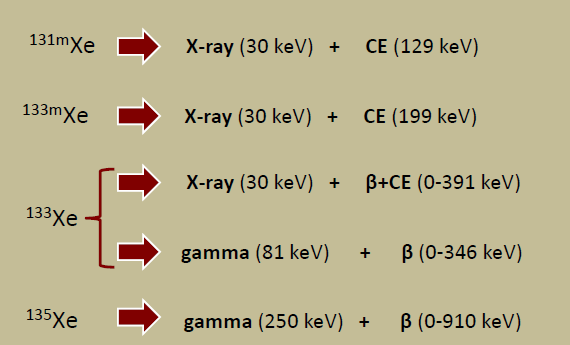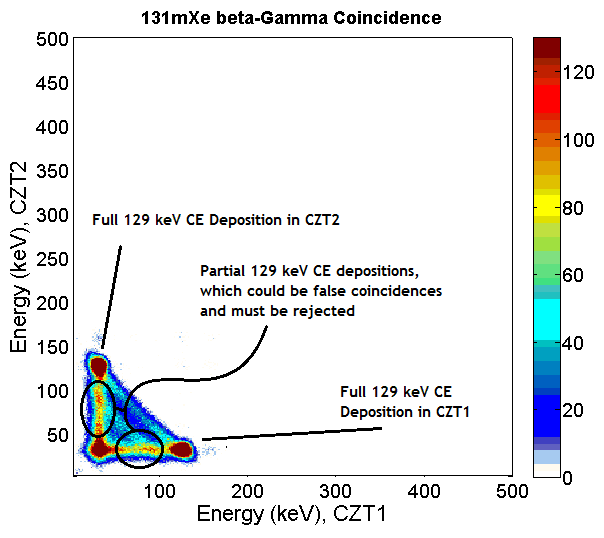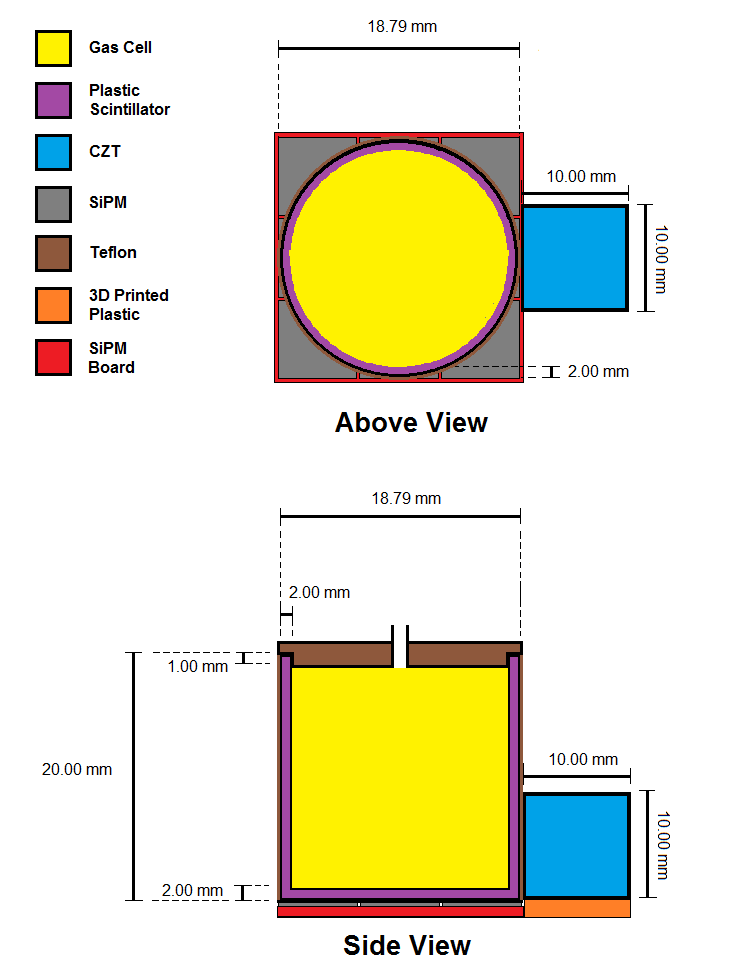Several radioxenon isotopes (131mXe, 133mXe, 133Xe, 135Xe), each with a unique beta-gamma coincident decay signature, are characteristic byproducts of nuclear explosions. Due to the difficulty of containing noble gases, the detection of atmospheric radioxenon has been reliably utilized by the Comprehensive Nuclear Test Ban Treaty Organization (CTBTO) to confirm the nuclear nature of explosions. Each isotope can be separately identified by utilizing a coincident detection system.
The motivation for this project stems primarily from a backscatter effect observed in the TECZT system previously designed at Oregon State University (for more information on this project, see the TECZT tab). CZT is a dense and high-Z material, which make it excellent for detecting gamma radiation- however, these qualities also can cause electrons to scatter out of the crystal with only a partial energy deposition. In the TECZT system, beta particles and conversion electrons can deposit part of their energy in one CZT crystal, backscatter, and deposit the rest in the other crystal. This can be registered by the system as a coincident event, despite the fact that only one particle has been detected. Electrons might also deposit part of their energy in one CZT and scatter out of the system, while a coincident photon deposits its energy in the other CZT. This is a true coincidence event. Both of these situations are problematic: as radiation can come from a variety of sources, we need to be able to isolate a region of energies where we can say with a high degree of certainty that the energies deposited were from a coincident radioxenon decay (this is particularly important in the case of the conversion electron, which should be observed at a fixed energy, unlike betas which are emitted as a spectrum). If we account for these partial dispersion backscatters as possible coincident events, we run the risk of increasing the false positive rate; at the same time, if we simply disregard all the partial depositions to avoid these false positives, the overall efficiency of our system is reduced due to rejecting true coincidence events.
To address this problem, a prototype compact radioxenon detection system is being developed. The detector consists of a gas cell surrounded by a well type organic scintillator. This scintillator is used to detect beta radiation and conversion electrons. The base of the scintillator is coupled to an array of silicon photomultipliers for light readout, chosen for their low cost, low power demands, and ruggedness. A CZT crystal, chosen for its excellent energy resolution and room temperature operation, is coupled to the outer wall of the scintillator in order to detect coincident gamma radiation. The goal of this work is to produce a detection system with a minimum detectable concentration (MDC) for the radioxenon isotopes of interest comparable to other state of the art radioxenon detection systems, such as the Swedish Automatic Unit for Noble gas Acquisition (SAUNA) and the Automated Radioxenon Sampler and Analyzer (ARSA), at a fraction of the cost.


